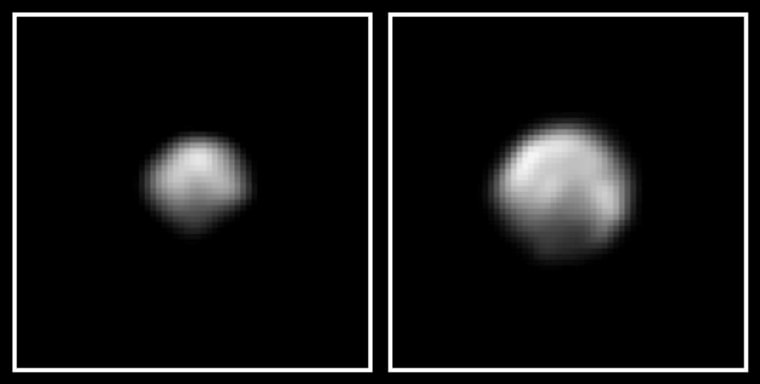New photos taken by a spacecraft zooming toward Pluto reveal more intriguing details of the dwarf planet's complex and varied surface.
NASA's New Horizons probe, which will make the first-ever flyby of Pluto on July 14, captured the images with its long-range camera from May 8 through May 12, when the spacecraft was a bit less than 50 million miles (80 million kilometers) from the dwarf planet.

"These new images show us that Pluto's differing faces are each distinct, likely hinting at what may be very complex surface geology or variations in surface composition from place to place," New Horizons principal investigator Alan Stern of the Southwest Research Institute said in a statement. [See the latest Pluto photos by New Horizons]
"These images also continue to support the hypothesis that Pluto has a polar cap whose extent varies with longitude," Stern added. "We’ll be able to make a definitive determination of the polar bright region’s iciness when we get compositional spectroscopy of that region in July."
Mission scientists first noticed the surface variations, which manifest as patches of differing brightness, in images New Horizons took in mid-April when the probe was about 70 million miles (113 million kilometers) from Pluto. The new photos are more detailed, depicting Pluto with twice as many pixels as last month's images did, NASA officials said.
New Horizons' Pluto views will keep getting better, of course, with the highlight coming on July 14, when the spacecraft cruises just 7,800 miles (12,500 kilometers) from the dwarf planet's surface. That day's images will be about 5,000 times sharper than the photos released Wednesday.
This is a condensed version of a report from Space.com. Read the full report. Follow Mike Wall on Twitter and Google+. Follow Space.com on Twitter, Facebook and Google+.